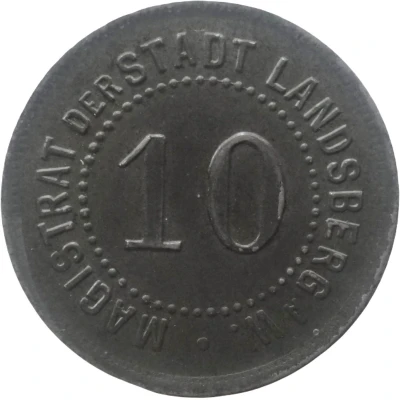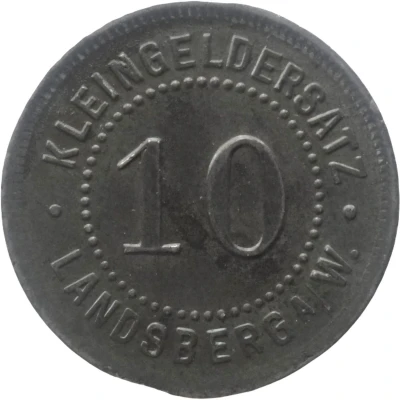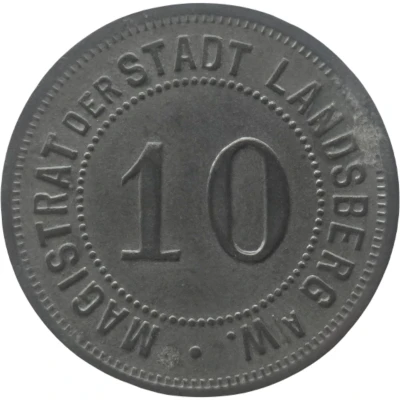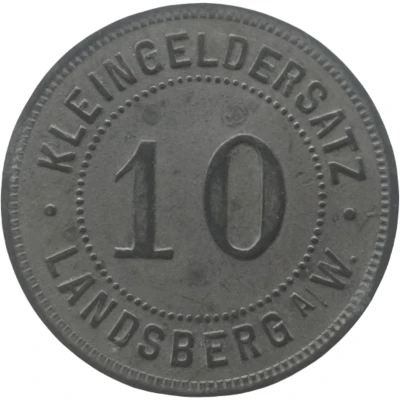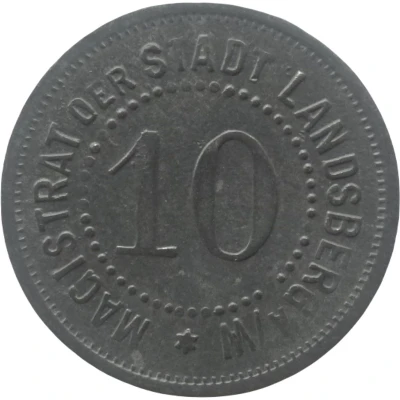
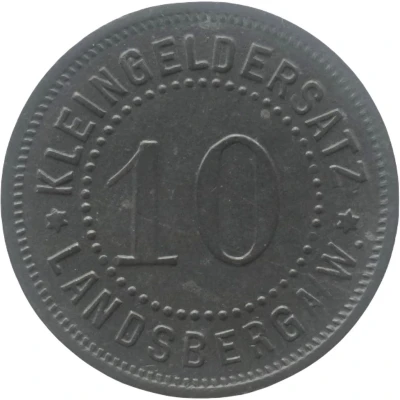

© Willem63 (CC BY-NC-SA)
10 Pfennigs - Landsberg an der Warthe ND
1917 year| Zinc | 2.26 g | 21.2 mm |
| Issuer | City of Landsberg an der Warthe (Prussian province of Brandenburg) |
|---|---|
| Emperor | William II (Wilhelm II) (1888-1918) |
| Type | Standard circulation coin |
| Year | 1917 |
| Value | 10 Pfennigs (10 Pfennige) (0.10) |
| Currency | Mark (1914-1924) |
| Composition | Zinc |
| Weight | 2.26 g |
| Diameter | 21.2 mm |
| Thickness | 1.06 mm |
| Shape | Round |
| Technique | Milled |
| Orientation | Medal alignment ↑↑ |
| Demonetized | Yes |
| Updated | 2024-10-04 |
| Numista | N#50260 |
|---|---|
| Rarity index | 77% |
Reverse
Pearl rim, legend circling pearl circle with denomination centered
Script: Latin
Lettering:
KLEINGELDERSATZ
10
✶ LANDSBERG A/W. ✶
Edge
Plain
Comment
FUNCK (Edition 2000) ► FUNCK (Edition 2012):F#270.3A ► F#270.3
Interesting fact
One interesting fact about the 10 Pfennigs - Landsberg an der Warthe ND (1917) coin is that it was issued during a time of economic turmoil in Germany. The country was facing severe inflation, and the value of the German mark had dropped significantly. As a result, the government introduced a new currency, the "Notgeld," which included coins like the 10 Pfennigs - Landsberg an der Warthe ND (1917) that were made of cheaper materials like zinc instead of the traditional silver or gold. This was done to reduce the cost of production and to make the coins more accessible to the general population. Despite the economic challenges, the coin still maintains its historical significance and value among collectors today.
